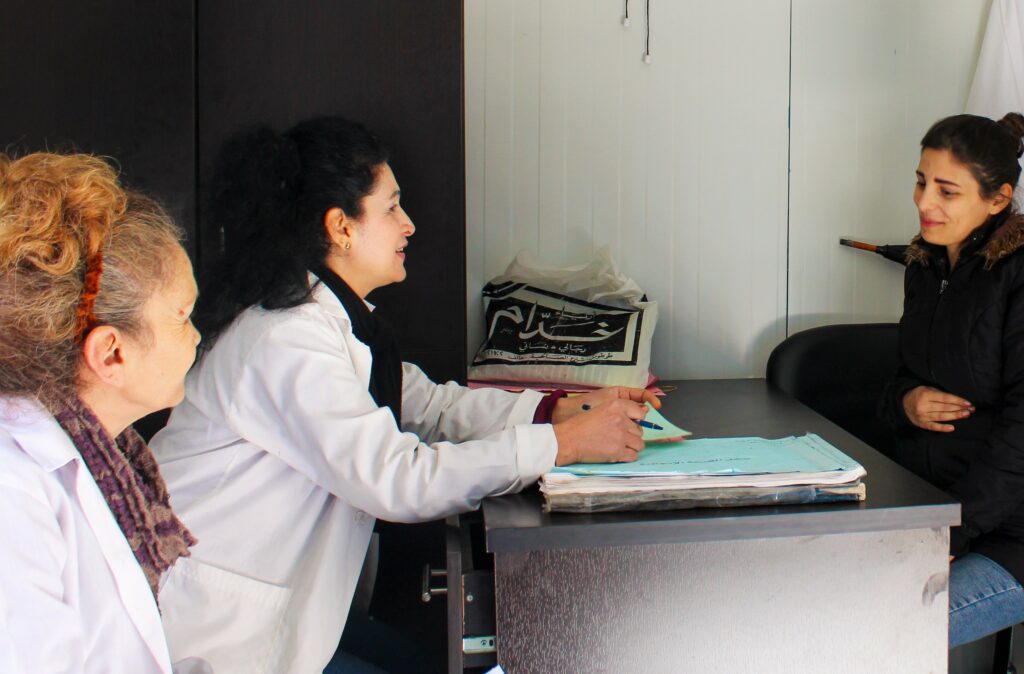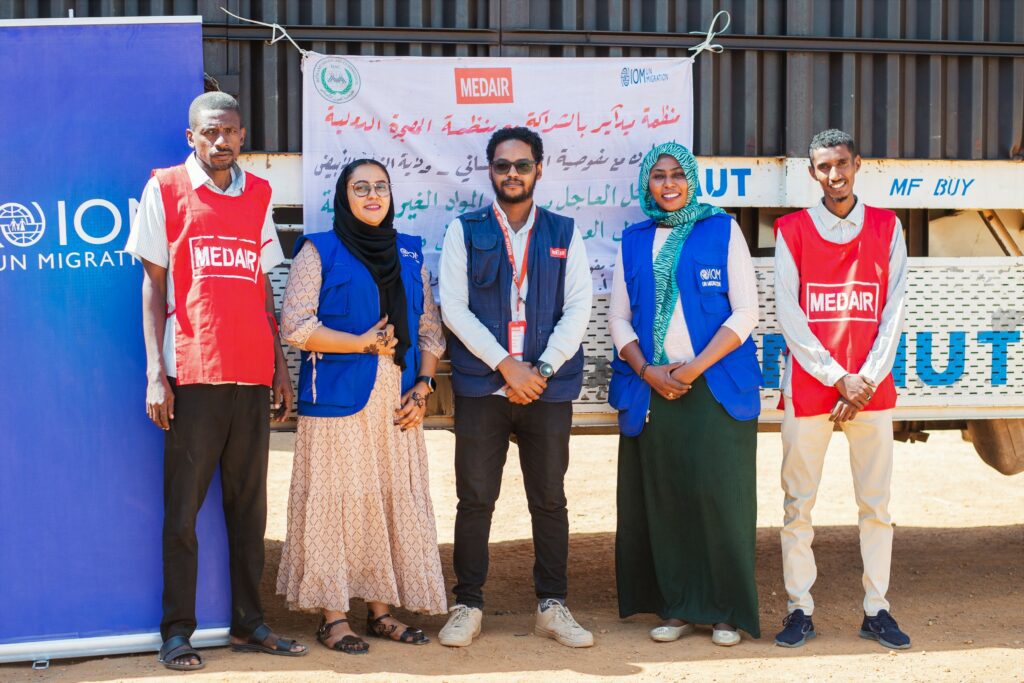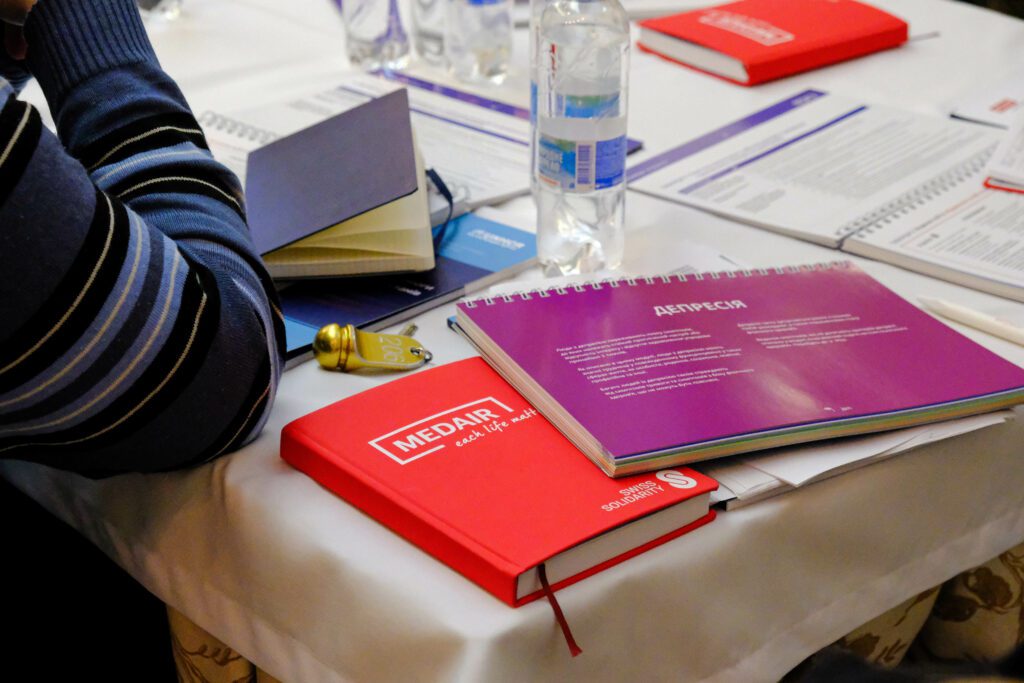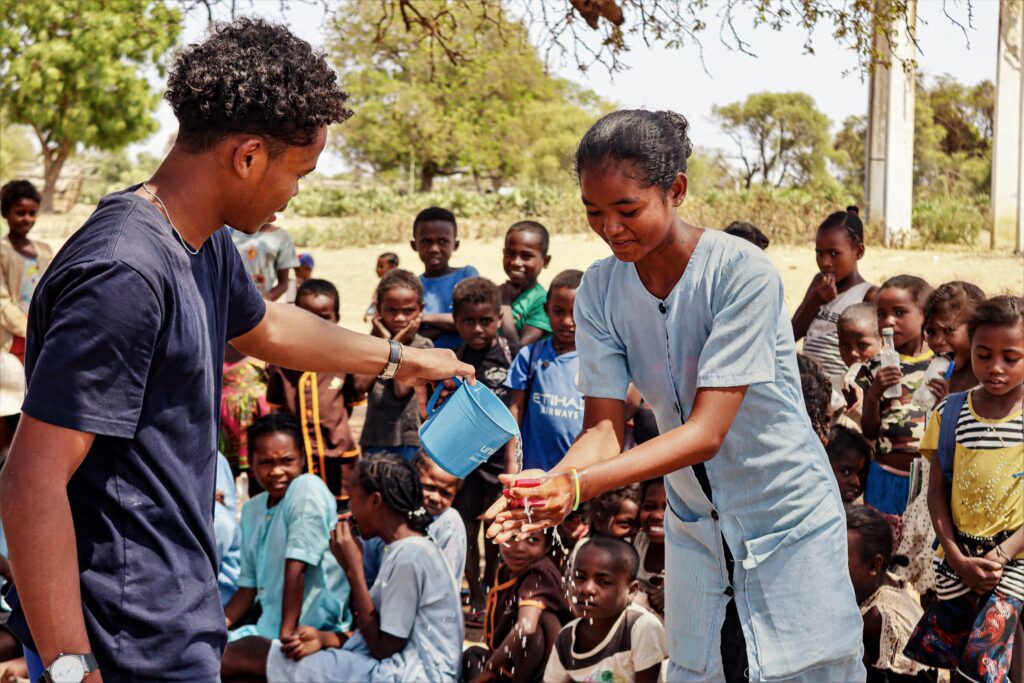Little did we know what a different place the world would be just a few weeks later. Across the globe, news channels are dominated by a single headline: Coronavirus. Whether momentarily or durably, Coronavirus has drastically altered our way of life.
For the vulnerable communities we serve, the coronavirus is also a new and distressing reality to be confronted with. But it comes in addition to the overwhelming challenges they are already facing.
Syrian refugees have been living in settlements for over 9 years now; Rohingya refugees in Bangladesh have suffered decades of oppression back in Myanmar; and the Congolese have been bravely and relentlessly fighting off Ebola, much to the world’s indifference – just to name a few examples.
Their circumstances make them particularly susceptible to infectious diseases and aid organisations, including Medair, are responding as best they can to mitigate the coronavirus’s impact on these communities.
But what about those “other” crises?
The ones that brought us to these countries in the first place. The ones that have not let up despite this new threat. The ones that could make the spread of coronavirus even more devastating.
We asked some of our colleagues to explain why these other crises are (still) emergencies. Now, perhaps more than ever, they must not be forgotten.*
AFGHANISTAN: Where to begin?
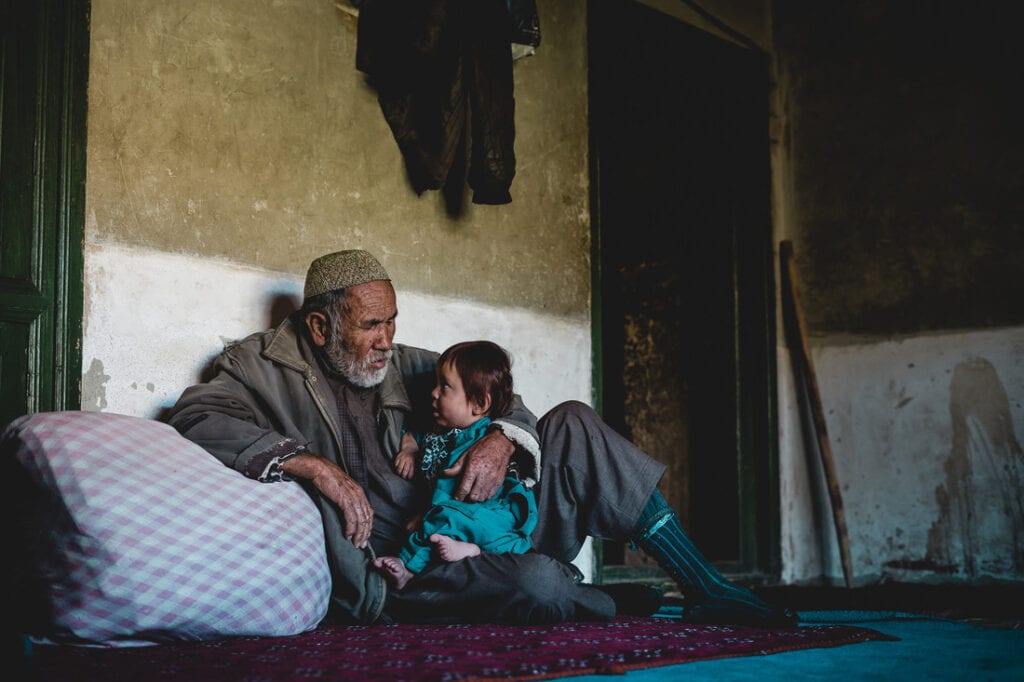 A grandfather sits with his grandson, who was successfully treated for moderate acute malnutrition, in the Central Highlands of Afghanistan.
A grandfather sits with his grandson, who was successfully treated for moderate acute malnutrition, in the Central Highlands of Afghanistan.
“There are so many simultaneous emergencies in Afghanistan; the first challenge is often knowing where to even begin. Most people are aware, from the news, of the conflict in Afghanistan, but what you see is often just a glimpse of the much larger story that is unfolding. You are less likely to hear about the devastating impact the conflict and natural disasters are having on the people of Afghanistan, and on children in particular. This year, a quarter of the country’s total population – over 9 out of 38 million people – will be in need of humanitarian assistance. Over half of them are children. Families are struggling to access nutritious food and as a result, 41% of children under 5 in Afghanistan are stunted – one the world’s highest rates.
As an organisation, we are trying to respond with a holistic approach and implement projects addressing the different crises within the communities where we work. This includes sending mobile nutrition teams to villages to treat malnourished mothers and children; providing access to safe drinking water by building or rehabilitating water points; building essential sanitation facilities, such as latrines, to improve hygiene conditions; training women to grow vegetables in their gardens to increase food diversity. In areas of the country which were particularly affected by drought, we also provided farmers with seeds to help them secure their next harvest, and the means to buy food until the harvest was ready.”
Anna C. Head of the Afghanistan Programme
Rohingya Crisis: “People’s lives have been put on hold”
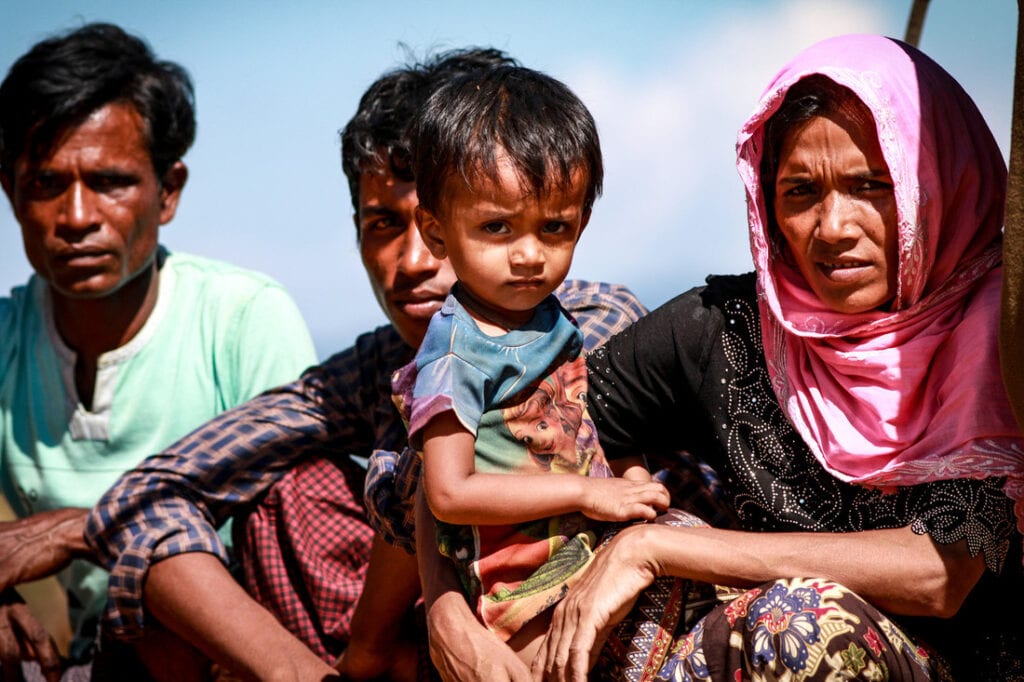 A Rohingya family sits by their shelter in Kutupalong Refugee Camp, in November 2017.
A Rohingya family sits by their shelter in Kutupalong Refugee Camp, in November 2017.
“It’s been more than two years now since the world watched in horror as over 700,000 Rohingya fled their homes in Myanmar due to unimaginable violence. They crossed over into Bangladesh traumatised and terrified, with just the clothes on their backs. Many were hoping they would be able to return to their homes – or what was left of them – in a matter of weeks, months at most. Yet here we are, in 2020, and they are still waiting, many of them living in what has now become the world’s largest refugee camp – over 600,000 of them on just 13 square kilometres of land. More than half of them are children. This is no way for them to grow up.
Yet, with the fear that their safety is still at risk in Myanmar, the Rohingyas’ lives have essentially been put on hold until a viable solution is found. For now, they depend fully on humanitarian assistance to survive. As aid organisations, we cannot give them what they want most – to return home in peace and safety – but we can provide for their needs, through health care, nutrition treatment for mothers and children, and shelters to help them stay safe. By supporting them through this extremely challenging time, we hope to remind them that they are not forgotten.”
Carl Adams, Country Director (Bangladesh)
Syrian Crisis: the largest ongoing refugee crisis of our time
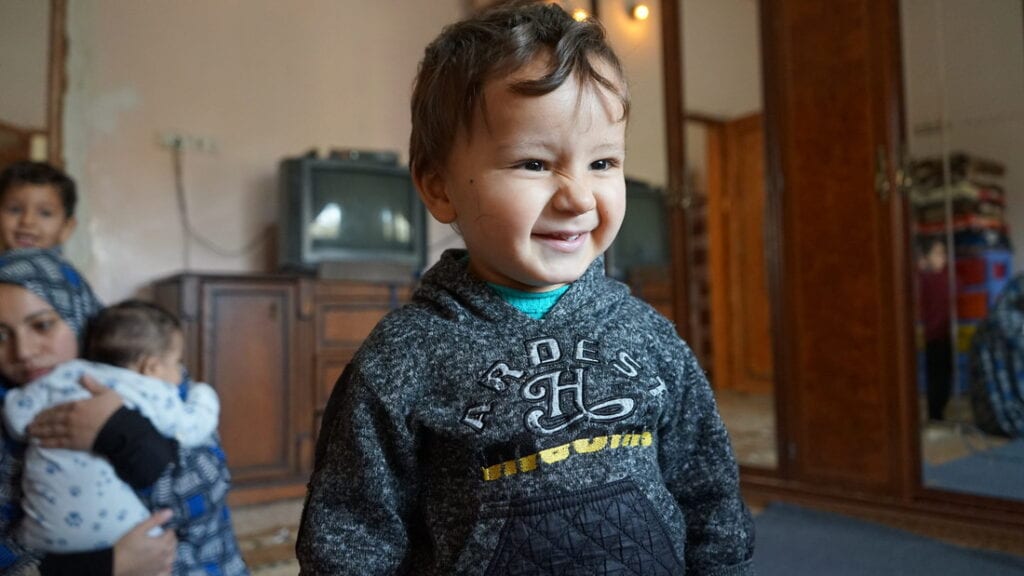 A child smiles in his home, in East Amman, Jordan – 4th Dec 2019
A child smiles in his home, in East Amman, Jordan – 4th Dec 2019
“At Medair Jordan, we are responding to the largest ongoing refugee crisis of our time by serving vulnerable Syrian refugees and the host community. Financial insecurity, unemployment, poverty, and child-labour are all challenges that make our emergency response for the Syrian refugees extremely important. The refugees in Jordan are still unable to access health facilities to receive life-saving surgeries or pay for complicated deliveries, this is where our Health team at Medair Jordan fills the gaps by providing cash assistance to vulnerable refugees in financial need.
Even though the Syrian crisis has been going on for a long period of time, the living conditions of the Syrian refugees have not improved substantially. They still face problems accessing education, health facilities, shelter, obtaining legal status, and securing decent income, therefore they can still be considered in a continuous emergency state and deserve the full attention of Medair’s teams.”
Sarah AlZureikat, Health Officer
Democratic Republic of the Congo: “More problems than you could ever imagine”
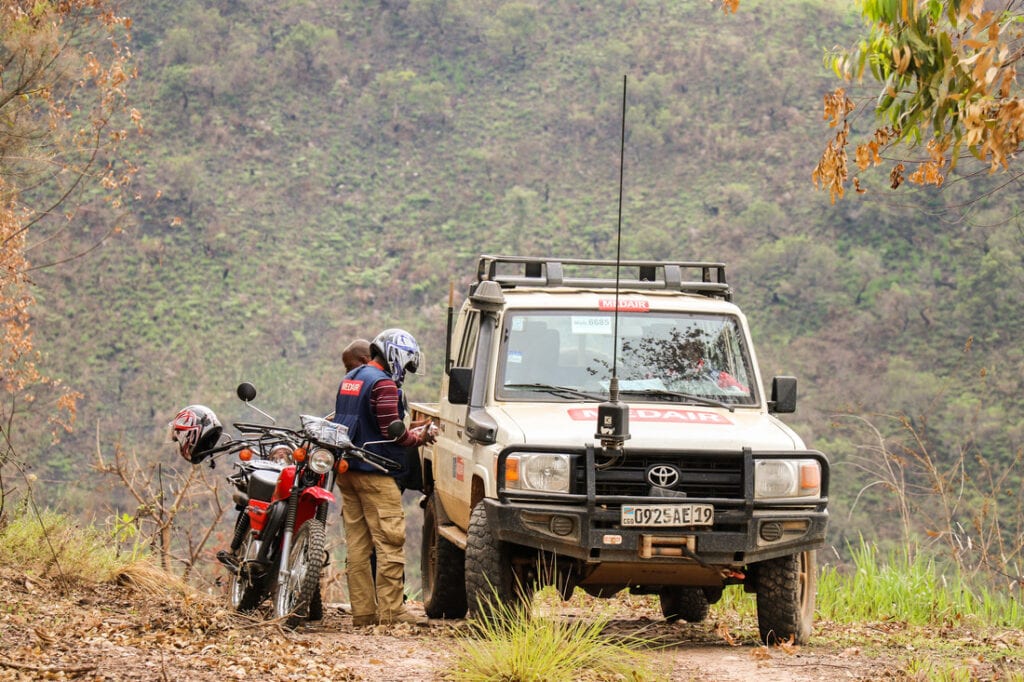 A Medair vehicle drives through a remote area of DR Congo.
A Medair vehicle drives through a remote area of DR Congo.
“I’ve lived in the Democratic Republic of the Congo off and on – mostly on – since 1988, and since 2016, I’ve been the Deputy Country Director for Programmes for Medair, based in Goma.
It’s a huge country – the size of Western Europe – and it’s got more problems than you could ever imagine… but there was a time when there was peace, there was prosperity, when people could live their lives and not be thinking about armed groups and so on. There was peace.
We are doing our part as Medair, to relieve suffering. I’m hopeful that I can envision this place as one day returning to stability and peace.”
Constance Smith, Deputy Country Director – Programmes
South Sudan
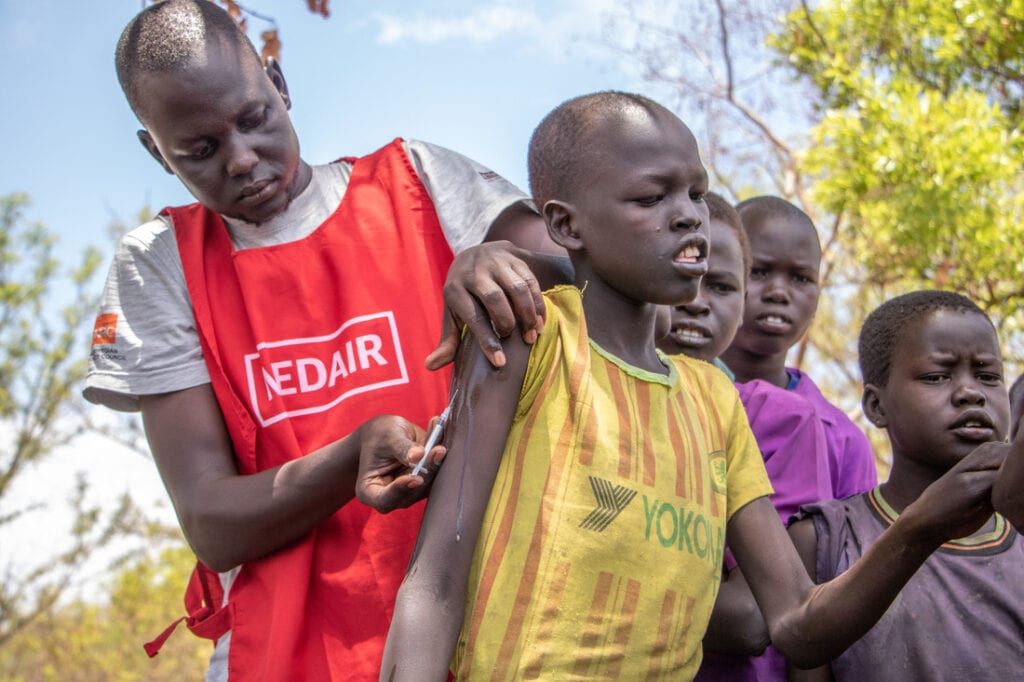 In 2019, the South Sudan Emergency Response Team vaccinated nearly 300,000 children against measles.
In 2019, the South Sudan Emergency Response Team vaccinated nearly 300,000 children against measles.
A country which has been through multiple civil conflicts over several decades has been affected in every area: food supplies, education, social protection; even infrastructure like roads, water networks and communications. Add in drought, famine, and sometimes severe flooding and you’ll find emergency levels of malnutrition, a lack of livelihoods, and a health system that struggles to stock essential medicines and to reach a scattered population.
How does a woman in labour get to a health clinic when 70% of roads are unusable during the rainy season? Where do skilled health staff come from when people have been displaced for years and training schools have been closed?
The facts are that South Sudan has one of the highest maternal mortality rates in the world, and the ratio of health workers to people needing services is 1:65,574.
South Sudan is affected by compounding emergencies that make recovery from any single incident extremely difficult.
Caroline Boyd, Head of Country Programme
*Quotes collected in January 2020
Medair is an international humanitarian NGO that provides emergency relief and recovery services to families made vulnerable by natural disasters, conflicts, and other crises. Medair is currently active in 12 countries. In Bangladesh, Medair works in partnership with World Concern.
This content was produced with resources gathered by Medair field and Global Support Office staff. The views expressed herein are those solely of Medair and should not be taken, in any way, to reflect the official opinion of any other organisation.


